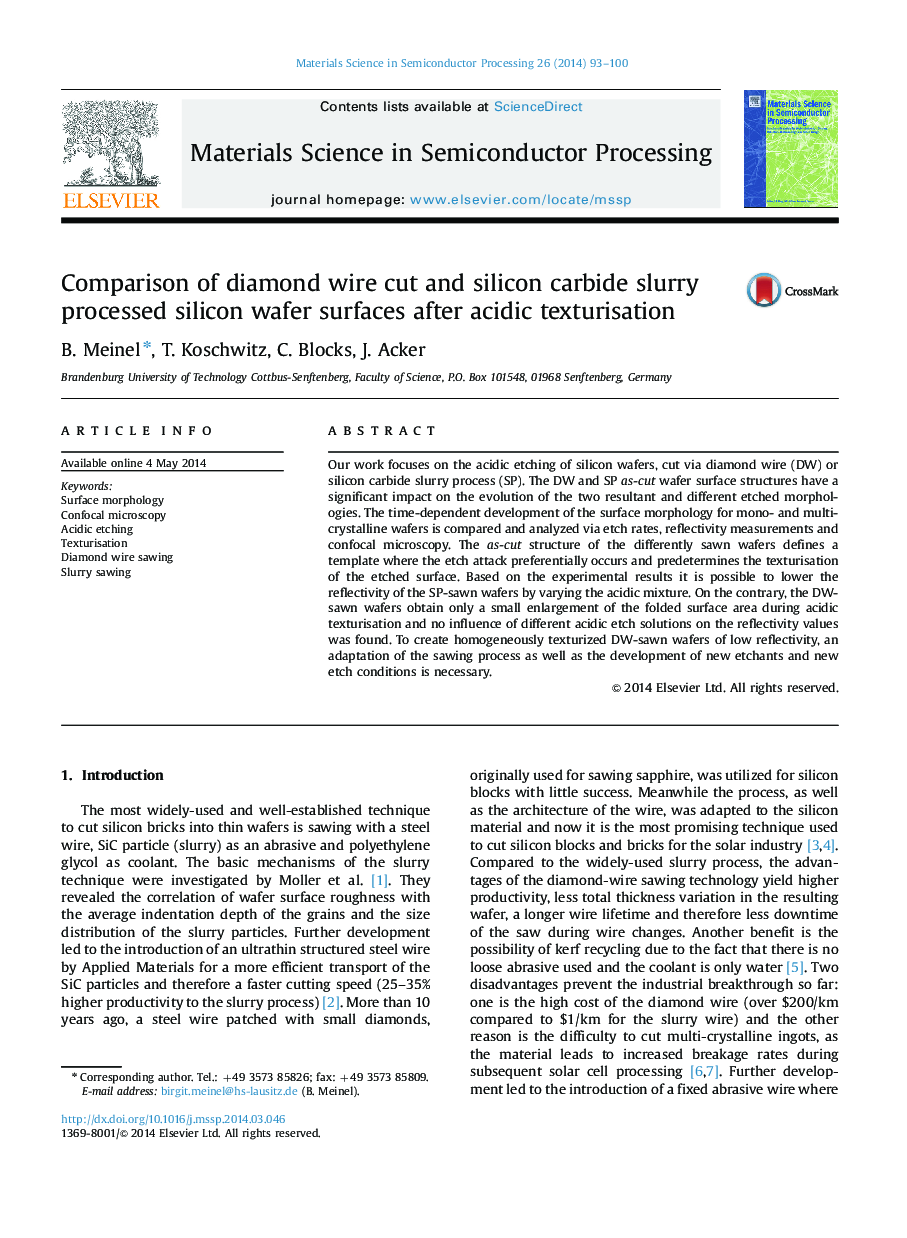| Article ID | Journal | Published Year | Pages | File Type |
|---|---|---|---|---|
| 728668 | Materials Science in Semiconductor Processing | 2014 | 8 Pages |
Our work focuses on the acidic etching of silicon wafers, cut via diamond wire (DW) or silicon carbide slurry process (SP). The DW and SP as-cut wafer surface structures have a significant impact on the evolution of the two resultant and different etched morphologies. The time-dependent development of the surface morphology for mono- and multi-crystalline wafers is compared and analyzed via etch rates, reflectivity measurements and confocal microscopy. The as-cut structure of the differently sawn wafers defines a template where the etch attack preferentially occurs and predetermines the texturisation of the etched surface. Based on the experimental results it is possible to lower the reflectivity of the SP-sawn wafers by varying the acidic mixture. On the contrary, the DW-sawn wafers obtain only a small enlargement of the folded surface area during acidic texturisation and no influence of different acidic etch solutions on the reflectivity values was found. To create homogeneously texturized DW-sawn wafers of low reflectivity, an adaptation of the sawing process as well as the development of new etchants and new etch conditions is necessary.
